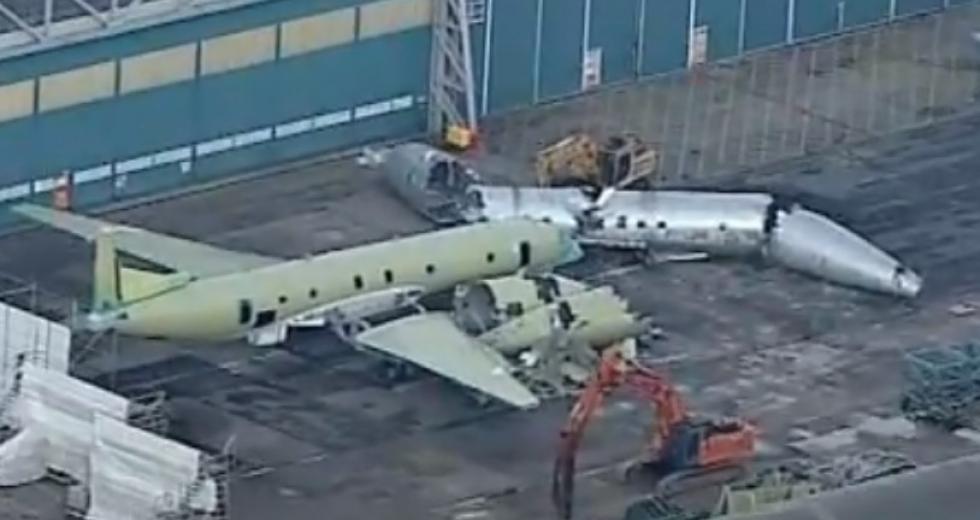
"Give me one good reason" is an old adage, which is usually used to get across the single most important reason why something should be done, is being done or perhaps could be done. Over recent years and months I have watched as article after article has emerged in the press on the subject of defence. The sum of those articles is that Britain's military strength has been cut to the bone across all three services - Army, Navy and Airforce.
The cuts have been justified by the Conservative government on the basis there is no money for defence or indeed any other public service. There is no money to defend the realm - there is no money to treat the sick and infirm in the NHS. This claim is untrue, since money is created from nothing by private banks and given to the government begging bowl as debt. My purpose here however is to stick to the rather simpler issue of whether the Conservatives are telling the truth about their commitment to Defence of the Realm.
Conservatives and Treason
I suggest that the Conservatives have deliberately contrived to undermine Britain's ability to defend itself, and, taking the nuclear deterrent as the most important part of our defence capability, they have knowingly acted to undermine our nuclear deterrent, thus placing the nation, our society, and all families and individuals at risk. Such deliberate calculated action to place the nation at risk is treason.
At this point the reader will surely say "give me one good reason to support this claim", and that is a reasonable request which I shall now answer in as few words as possible.
Since 1968 Britain's nuclear deterrent has been provided by a nuclear submarine i.e. a submarine fitted with a nuclear propulsion plant and armed with missiles carrying nuclear warheads. The first nuclear submarine, HMS Resolution, carried the Polaris missile, which was later replaced by the more advanced and powerful Trident onboard the Vanguard-class submarines. For clarity these nuclear weapon armed submarines are known as 'bombers', as opposed to 'hunter-killer' or 'attack' nuclear submarines whose task it is to locate and sink other submarines as well as surface ships.
Bombers on Patrol
The simple idea behind the deterrent 'bombers' is that they can hide in vast oceans, such as the Atlantic Ocean, and can launch their ballistic nuclear missiles whilst the submarine is still submerged, unseen and un-located by an enemy. The unseen and un-located factor is critical, in that if their position at any given time should be found or known by an enemy, then the possibility would exist that they could be sunk before firing their missiles. This type of 'first strike' knockout, before a nation can retaliate is a key weakness of land-based nuclear deterrent missile systems which are always in a known location and are thus potentially vulnerable to a 'first strike' against them.
The principle of the 'bomber' hidden at sea is a good one and it is a key reason why Britain, the US, France and Russia for example have adopted this system, even where it is used to supplement other nuclear deterrent systems such as fixed-position land-based, air-launched or relocatable mobile systems by road or train.
Unfortunately there are also weaknesses to the submarine-based nuclear deterrent. The bomber must transit to its hidden patrol area at sea. It must do this as quietly as possible since enemy submarines, ships, aircraft, spy ships, satellites and the full gamut of hostile intelligence services will be striving to identify the date of departure of the submarine for its patrol, and locate its actual position on transit, or in the final patrol area.
Although capable of underwater speeds equal to or in excess of that of warships on the surface, nuclear submarines become noisy at speed, and this makes them easier to locate and track. High underwater speed can also degrade their own sensor systems, making it harder for the bomber to locate and identify hostile submarines, or other assets, tasked to locate it. The deadly underwater game is hide-and-seek.
To transit to a designated patrol area undetected, the bomber will proceed at a slow quiet speed to minimise detection opportunities by hostile assets, and to maximise the possibility of detection of those hostile assets by the bomber itself. Should threatening vessels be detected, the bomber will take evasive action to creep away and remain hidden.
Ensuring the secrecy of the bomber's position, mission and patrol area is thus vital to the provision of the nuclear deterrent especially on a 24 hours per day 365 days per year basis with one submarine on patrol at any time whilst others ready themselves for patrol, or wind down following patrol.
Locating and Plotting Hostile Assets
To ensure that the bomber stays undetected, it is vital that the Royal Navy and intelligence services maintain a comprehensive plot (map) of potentially hostile military assets which may try to locate and target the British nuclear deterrent bomber to destroy it before it could be ordered by the Government to launch its ballistic missiles.
The plot is compiled by identifying, locating and tracking potentially hostile military assets capable of being used against our submarine nuclear deterrent - in the first instance, these are likely to be submarines, aircraft and ships. To undertake this work the Royal Navy has to use its own assets in a co-ordinated way. Royal Navy submarines ships and helicopters, and Royal Air Force aircraft, will be used to search and track hostile units, to allow the bomber to be warned of approaching dangers.
Whilst Royal Navy submarines and ships are highly capable search vehicles, they are limited in their area of search by the speed at which they can transit, especially if they are to remain undetected themselves. Helicopters have the advantage of range and speed in their search role, but they are totally reliant on their host warship for fuel, support and maintenance.
Scrapping an Irreplaceable MPA
To resolve this issue, enter the Maritime Patrol Aircraft or MPA. The MPA combines high speed, endurance, sophisticated search and detection equipment, excellent communications and powerful weapons systems. It is an irreplaceable component of the integrated anti-submarine and 'nuclear deterrent protection' capability of the Royal Navy, which, as we have already stated, also comprises submarines, ships and helicopters, together with specialist fixed detection assets, satellites and the Intelligence services.
In October 2010 the Conservative government, led by David Cameron, fully knowing the essential nature of the UK's Nimrod MPA fleet for the protection of our nuclear deterrent, simply scrapped them. All of them. At the same time specialist teams destroyed the training simulators, thereby ensuring that crew training and expertise would also be destroyed.
The scrapping decision was described by Warships International Fleet Review in an article entitled "Nimrod Shambles", as "a strategic error of epic proportions that is unprecedented."
There was no 'error'. The scrapping of Nimrod put the nuclear deterrent at grave risk of detection and targeting by hostile powers, at a time when the very same Conservative government which scrapped it is repeatedly warning of the growing capability and aggression of the Russian submarine fleet.
Military Experts Warn of Risks to Deterrent
In a letter to the Telegraph, signed by Marshal of the RAF Lord Craig, the former Chief of the Defence Staff and Chief of Air Staff; Major General Julian Thompson, the commander of land forces in the Falklands conflict; Major-General Patrick Cordingley, the commander of the Desert Rats in the Gulf War; and Admiral Sir John "Sandy" Woodward, commander of the naval task force in the Falklands, the writers warned:
that national security will be dangerously exposed without the aircraft, which would have continued to provide long-range reconnaissance and surveillance, and protect the Royal Navy's Trident submarines.
Further warnings were made by other former senior military officers, including:
Britain’s lack of submarine-hunting planes after the Nimrod fleet was axed has left Trident vulnerable to Russian spying which could “prejudice the security and effectiveness” of the deterrent.
For 'spying', read detection, tracking and targeting.
One Good Reason
This, then, is my one good reason. The deliberate and calculated destruction of the Nimrod fleet which undermined, and continues to undermine, the safety and security of Britain's nuclear deterrent is not 'error' or 'cock-up', or incompetence - it is culpable treason. The matter should be fully investigated with a view to the prosecution and sentencing of the individuals responsible, be they former Prime Minister David Cameron or any other government and military collaborators, no matter their power, position, status or rank.
Postscript
As I complete this article further evidence of Conservative culpability in defence emerges with the news that the entire UK nuclear attack submarine fleet is out of action. This was reported in the Sun, Daily Telegraph and others with the shared headline:
Britain's entire fleet of nuclear attack submarines 'out of action'
But within hours of a challenge by UK Column, the Telegraph had changed its story to:
Ministry of Defence denies Britain's entire fleet of attack submarines are out of action
More latterly, on 11 February 2017, UK Column received credible reports that French attack submarines have been called in to help protect the UK's nuclear deterrent submarines on patrol. These reports add substance to the fact that the UK's attack fleet is unable to perform its key designated military task of protecting our nuclear deterrent.

